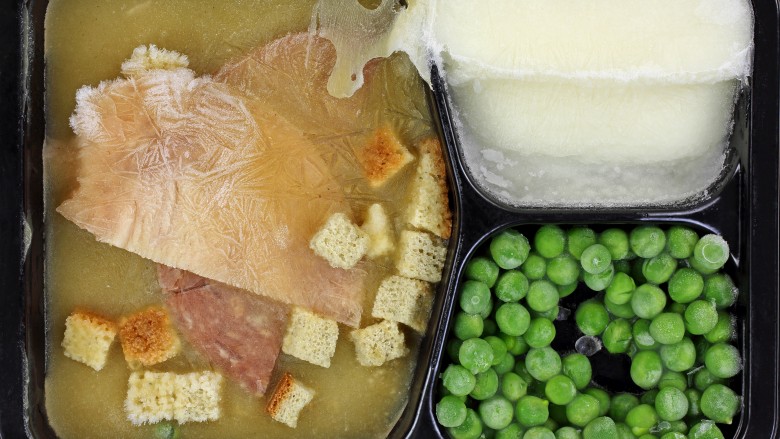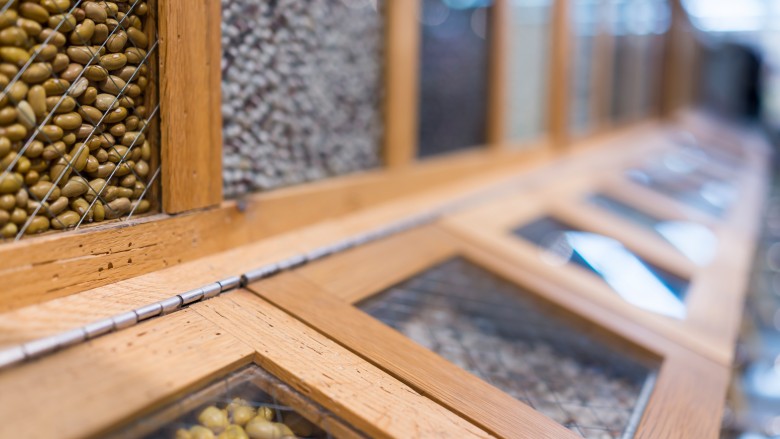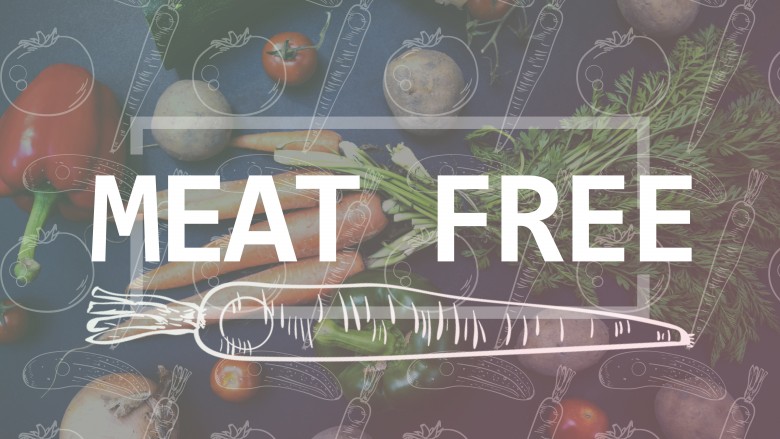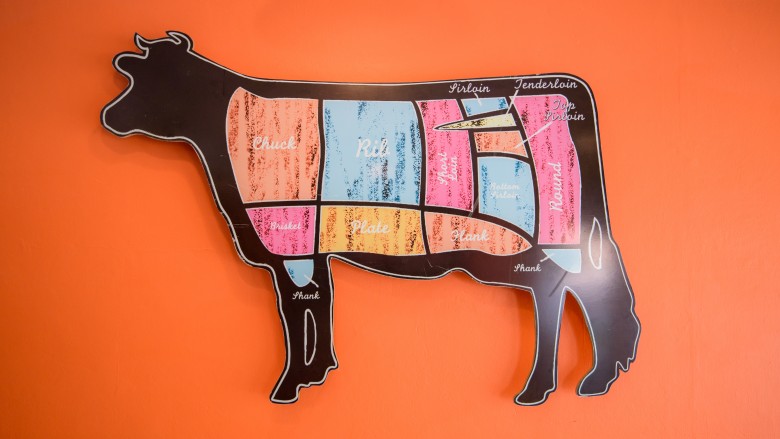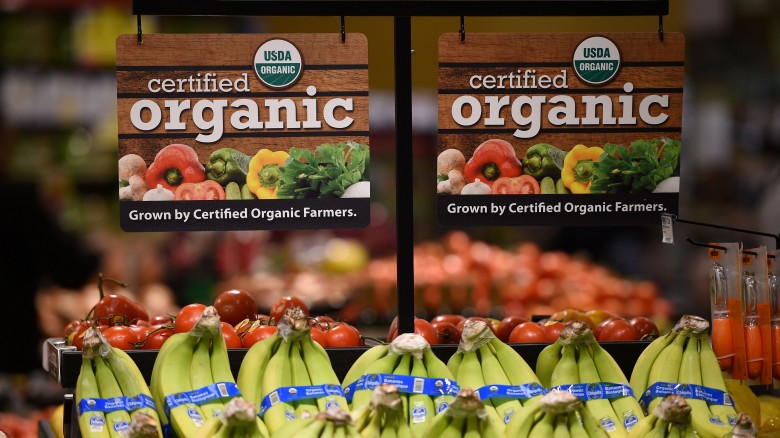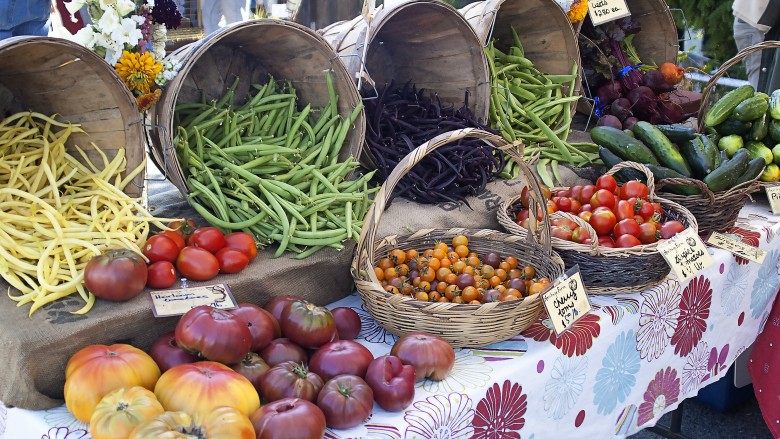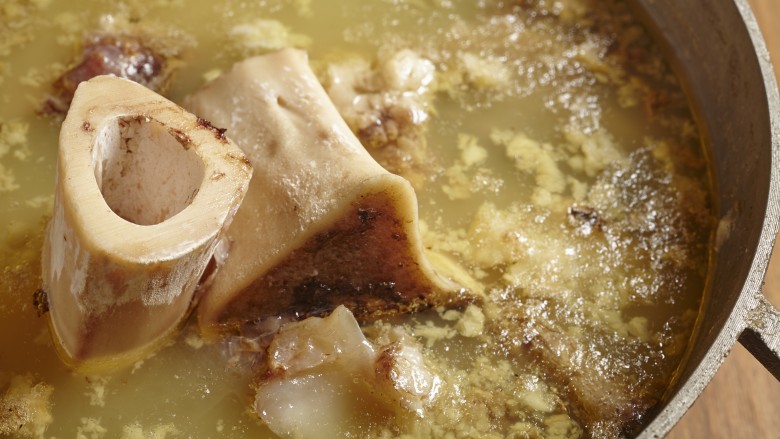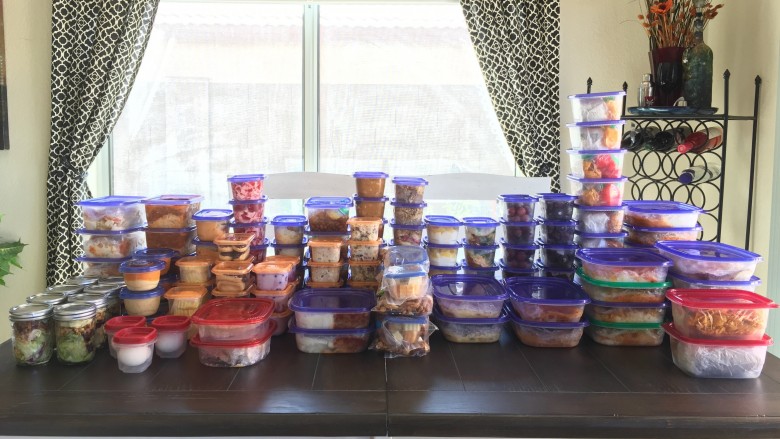How To Eat Healthy On A Budget
I moved to NYC in the late '90s. I was young, loving my independence, and pounding the pavement every day looking for acting jobs while (barely) paying the bills waiting tables and performing as a clown at children's birthday parties. I was broke, and I was eating like crap. Fast food, bodega sandwiches, cookies by the bagful ... anything cheap that filled my belly while I was on the run. When I finally realized that the way I was eating was affecting my energy levels and my health, I knew I had to figure out a way to spend my meager grocery budget on foods that would nourish my body instead of harming it. And so I did.
I already knew how to cook, but I got better at it. I learned about ingredients and I explored my local stores, wandering slightly off the grid to get the best deals. I tried ethnic ingredients, produce, grains, and cuts of meat that I had never heard of before, and I did it while still paying my insane NYC rent.
I'm (a little) older now, and the budget allows for filet mignon and lamb chops a lot more often than it used to, but I haven't forgotten the principles I established for myself back then to stretch my grocery budget to its max without sacrificing nutrition. Here's what I've learned over the years about how to eat healthy on a budget.
Skip the processed foods
The rule of thumb I used back in my NYC days, and still say to my family to this day is this: "If they can afford to sell it that cheap, it must be garbage." One of the more challenging steps of learning to eat healthy on a budget is learning to ditch all the boxed meals and junk foods with their deceptively low price tags. Processed foods don't offer our bodies much nutritional value (if any), so every penny you spend on them is misspent. Those frozen, microwavable meals, even the ones that make big health claims on the packaging ("Now with whole grains!") are also chock full of chemical additives and fillers that are included so they can sell you those meals for cheap. And are they really cheap? If you were to portion out the tiny amount of meat and veggies they actually include, you'd soon find that buying real chicken and broccoli and cooking it yourself would be a far better value. Sure, some items come packaged automatically, like flour and frozen produce, but for the most part, aim to skip packaged foods, especially those that have ingredients you don't recognize as something you could buy yourself individually in a grocery store.
But what about packaged organic foods? I'd be lying if i said I didn't have some Annie's organic frozen burritos in my freezer right now. Yes, the list of ingredients on many organic processed foods is far easier to stomach, but it's still processed food. (And you might be surprised what additives the USDA allows organic food manufacturers to put in their food.) Recognize packaged meals and snacks as what they are — convenience foods, not health foods.
Buy in bulk
It may seem counterintuitive to spend more on items that you normally buy in smaller sizes when you're at the store, but for those key items that you know you'll be using multiple days of the week, buying in bulk really pays off in the long run. Dried grains, dried beans, and flours are perfect examples of the items to look for in your grocery store's bulk section or at a membership club store. If possible, make room in your budget to purchase one bulk item with each shopping trip as you slowly build up your healthy pantry. I didn't have much room to store groceries in my tiny NYC apartment, but I found creative ways to make room for larger items that I used up quickly like gallons of extra-virgin olive oil and bags of brown rice that I stored in plastic containers in my bedroom closet. Once I had a family, I saw that buying organic milk in bulk from Costco was only a little bit more expensive than buying regular milk at my local grocery store. I knew we'd use it quickly, and organic was important to me, so it made sense.
Enjoy meat-free meals
I am as much of a carnivore as the next girl, but I know that meat-free meals are one of the best ways to stretch a budget and load a meal with the nutrient-packed, plant-based foods that we all could stand to get more of. Beans are an amazingly tasty and super-economical way to get a healthy dose of protein, fiber, and antioxidants and are even cheaper when you buy them dried. Cooking dried beans for the first time can seem daunting, but once you get the hang of them, you'll see how versatile they are as a side or main dish. Grains like quinoa, brown rice, wild rice, and farro, can all be purchased in bulk and provide a variety of tasty textures and colors on your dinner plate or in your pack and go lunches.
Look for meatless recipes that have flavors you and your family already love, like artichoke spinach lasagna, veggie- and bean-stuffed zucchini boats, black bean and butternut squash enchiladas, or spicy Thai peanut sauce over roasted sweet potatoes. Eggs are another fantastic and economical protein source that can enhance or star in any meal of the day. Try a crustless broccoli and cheddar quiche, poached eggs over polenta, or a fried egg-topped quinoa bowl.
Buy cheaper cuts of meat
Eating healthy on a budget doesn't mean you need to give up meat. Whether purchasing organic or traditionally raised meats, there are many cuts appropriate for both slow-cooking and fast-cooking that will stretch your grocery budget.
For beef, look for slow-cooking favorites like brisket, short ribs, and shank, or grilling cuts like flank and skirt steaks. When buying pork, tasty and economical cuts include the pork sirloin chop and the coppa (or pork collar). A pork butt or shoulder is the cut you buy to make a delicious and affordable pulled pork. Lamb shanks are far cheaper than lamb chops or shoulders and one of my favorites when hosting dinner parties. When buying chicken, consider buying cheaper and more flavorful cuts like thighs and legs, or better yet, buy the whole chicken and use the leftovers for stock. Don't be tricked into paying more per pound for meat that's been trimmed of fat or pounded into certain shapes and thicknesses – you can do that work yourself.
Fish is even an option on a budget if you know which kinds to look for. Mahi mahi, or dolphin fish, is a sustainable and thrifty choice. If you're thinking of making a chowder, consider buying cuts from the fishmonger that sometimes get discarded, like wild salmon tails. Remember, sticking to a budget is no reason to eat poorly farmed or endangered fish.
Yes, you can still buy organic
If organic foods are important to you, you can enjoy them while still staying on a budget. Some groups suggest buying organic versions of certain produce if you want to avoid GMOs or the heaviest amounts of inorganic pesticides and antifungal agents. These include things like peaches, apples, bell peppers, celery, nectarines, strawberries, cherries, pears, imported grapes, spinach, lettuce, and potatoes.
When it comes to organic meat, yes, it can be pricey, but this is another area where buying less expensive cuts can majorly help you out. I find that buying a package of organic, bone-in chicken thighs or drumsticks can be comparable in price to a package of conventional chicken breasts. I also buy organic or pastured eggs when I can; even though they're more expensive than traditional eggs, the amount of protein you're getting for the money is still a good value, and the quality of the eggs I eat is a concern for me.
Be creative with where you shop
Sometimes, the best deals won't be at your local supermarket. Ethnic stores are great places to score produce and grocery items that are sometimes cheaper than you could get at the grocery store. An Asian supermarket near me sells amazing produce (some that I never even knew existed) and at reasonable prices. I also get huge boxes of tea there. When I was living in New York, there were two local stores that sold the produce items that restaurants had turned away that day. Everything was fresh, even if it didn't look all that beautiful. They also sold bulk spices and herbs at a steep discount. I quickly learned that the street fruit vendors had much better prices than the supermarkets and were willing to haggle and deal the more I bought. Bakeries and bagel shops are often willing to sell items cheaper later in the day, and the same holds true at farmer's markets, when vendors don't want to pack up a truck for the ride home.
Big-box membership clubs might be worth the price of membership, if you know they carry what you want at great prices. Ask for a free pass to shop for a day and check it out for yourself. For example, I've been very impressed in recent years with the amount of organic meats, produce, and packaged goods I can get at Costco, and the 5-year supply of AAA batteries doesn't hurt either.
Use every scrap and always have a plan for leftovers
Lucky for us thrifty-minded folk, it is uber-trendy to limit waste and garbage right now. Making your own stocks and broths is a brilliant way to use up the bones and carcass of any meat or poultry that you cook. I save bones in plastic storage bags in the freezer until I have enough bones and time to make a batch. Even veggie scraps can be saved for this purpose.
When I cook beans and grains, I usually have a plan for two meals I can get out of them, like using them as a side dish one night and adding them to a soup I make the next day. When I am working out of the house, I make sure to make a large dinner the night before so I can bring leftovers with me for lunch the next day. No scrambling in the morning! If I cook a whole chicken, I save enough to top salads. Speaking of salads, there are so many things other than the typical ingredients like lettuce and tomato that make for a great chilled meal. Toss in leftover quinoa, roasted potatoes, or wild rice, but be sure to pack your dressing separately! Leftover fresh herbs can be frozen in melted butter or olive oil and stored in ice cube trays.
Make your own dishes and ingredients
When it comes to bottled and packaged goods at the store, the ones that are organic or offer higher quality, more healthful ingredients are, not surprisingly, pricier options. Making these things yourself, however, saves you a ton of money, and helps you to avoid the fillers and artificial additives that processed foods contain, even the organic brands.
Don't put too much pressure on yourself all at once to suddenly DIY every item on your grocery list. Pick one item that you normally buy premade, make sure you already own the proper equipment to make it, and then seek out an appealing recipe to try. I've gotten into a steady habit of making my own salad dressings, sauces, marinades, stocks, mayonnaise, and hummus, all of which I make in my blender or food processor in large batches and store in the fridge or freezer. You may find that you have a knack for making your own nut butters and nut milks, jams, pickles, kombucha, kimchi, homemade breads, fruit leathers, ice cream, veggie burgers, you name it. When you control the ingredients and the amount you make, you control the cost and the quality.
Coupons and sales
I confess, I went a little coupon wild when I first made the move to the 'burbs. People didn't use them so much in the city, and stores never doubled or tripled coupons. But when I got to the suburbs? Look out for the crazy coupon lady. Circulars with coupons were dropped on my doorstep almost daily, and a subscription to my county's Sunday newspaper was only $8 a month for the first year. I ended up going off the rails and buying items that I would have passed right by in New York. (A prepper's basement-worth of soup is still in my garage.) As time went by, however, and I really evaluated what I was buying, I wasn't as proud of my deals. Coupons for organics and other healthy foods, though growing in numbers, were still too few and far between to justify what I was paying for my newspaper, not to mention the time I spent finding and organizing coupons.
Now I just hang on to the free coupons I get at checkout. The bottom line with coupons is this: if you have the time and the gumption, have at it. You can definitely score some amazing deals. For me, I started to calculate what all that time was worth to me, and decided to spend it in other ways.
Sales, however, are a planner's dream come true. If you have room in your freezer, you can plan ahead and take advantage of great sales. For perishable items that won't freeze well, remember, only buy what you will use. And by all means, join the savings club of every store you shop at. It only takes a few minutes and will save you a bunch.
Grow your own veggies and herbs
Have a green thumb? Planting a vegetable or herb garden is a fantastic way to add fresh and healthy foods to your diet while stretching a penny if you do it right. Take it from me, it's easy to overdo it with a garden and spend more on all the bells and whistles than you really need to. My first advice would be to decide if you're going to create a garden directly in the ground, use raised garden beds, or just plant some veggies and herbs in a pot. I'd recommend starting small, like I did in my New York apartment, with a small pot of herbs on my windowsill. I eventually upgraded to tomatoes in larger pots, and now I grow veggies like arugula, zucchini, squash, asparagus, cucumbers, and all sorts of herbs in a big plot in my backyard. If that's the route you plan to go, make sure to get your soil tested. It's a fairly painless process and can save you a lot of money and effort in the way you prep your garden. It can also give you an idea of which crops will do better in your garden. Do your research and get digging!
Meal prep
Eating healthy meals while also keeping yourself on a grocery budget all comes down to meal prep. Before you hit the store, plan the meals or recipes you plan to cook that week, create a list, and stick to it! If you're working a typical weekday, 9-to-5 schedule, doing your cooking and prepping on the weekend will work brilliantly. Making organized, grab-and-go breakfasts and lunches to last you and your family the week will make it so much easier to keep on track with your healthy lifestyle.
If you like smoothies, keep pre-filled containers of the ingredients in your fridge or freezer, so you can just dump it in the blender and run. Start making overnight oats. Make large batches of roasted veggies, cook and chop meat and poultry into bite-sized pieces, hard-boil a dozen eggs, make a large pot of beans or grains, and decide if you want to assemble each meal individually at the start of the week or mix it up each day. For dinners, your crockpot can cook for you while you're at work, and it does wonders with economical cuts of meat. You can even prep and store a month's worth of crockpot recipe ingredients in your freezer like a meal prep master. Get going!

